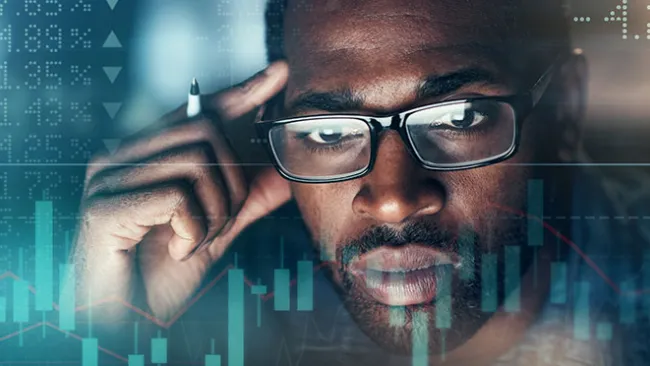When it comes to delivering convenient and personalized services, conventional banks are at an inflection point. The financial sector has seen significant disruption from financial technology (fintech) firms in recent years, especially in the areas of retail banking, payments, lending, and wealth management.
A major catalyst behind the disruption has been more sophisticated uses of customer data and third-party data combined with technology. Growing applications of digital analytics and artificial intelligence technologies, for instance, have enabled financial institutions to provide users with hyper-personalized financial services such as robo-investment advisors, AI-powered customer service, hyper-personalized marketing and more.
As the bar for exceptional customer experience continues to rise, financial services firms face both a challenge and an opportunity to reimagine the customer experience for customers and thrive in the future.
Customer intent
Compared to fintech firms that only offer one or two products, banks have massive amounts of customer data, however, much of that data is underutilized for customer insights, says Alyson Clarke, a principal analyst at Forrester. “The game isn't data, the game is insights and it's about being proactive and having predictive insights—that's the differentiator here,” Clarke says. “If you're not leveraging it to get insights to better engage with the customer and make decisions in your business then there's a problem.”
Understanding why customers are contacting a bank, i.e., understanding customer intent, and proactively providing the right service is one way that banks are looking to improve the customer experience. Cailing Dong, a principal data scientist at Capital One, explained in a blog post how she and her team were exploring opportunities to do exactly that using clickstream data.
Clickstream data, which logs user actions, such as when users arrived at a webpage, what they clicked on, where they navigated to next, and time spent on each page, provides a rich trove of user data. Dong outlined three use cases—clickstream-based call intent prediction, search analysis, and frequent sequential pattern mining—for how clickstream data can be used to provide a better customer service.

0:15
“Overall, exploring clickstream data at an individual customer level can help the financial services industry provide a more personalized experience to their customers, while identifying common patterns among customers can help identify seasoning trends, common customer pain points, and even abnormal behavior patterns,” Dong writes.
Indeed, understanding whether the customer contacting you wants “a simple transaction, or a complex emotion-driven interaction can save time, money, and frustration for customer and brand,” says Ravi Bharadwaj, executive director of corporate strategy at TTEC. In addition to clickstream data, call transcriptions, agent/site data, customer profile metrics, and attrition information are key sources of data that can be combed for insights.
The firms that will win their markets in the next two to five years, Bharadwaj continues, will use “data, empathetic analytics, and empowered employees to understand why customers are interacting with a brand, so they can deliver the right message on the right channel at the right time while reducing effort, elevating customer experience, decreasing cost-to-serve, and driving growth.”
Understand what customers want – before they ask for it
Another opportunity for banks to deliver value is to think like a fintech firm and identify and solve customer pain points. For instance, Nectarine Credit, a credit application and credit decisioning software platform for small businesses, realized that the business credit application process was incredibly onerous and slow.
When applying for credit from a seller, manufacturers and distributors had to email or fax their business credit applications. And without an efficient system for processing the applications and making credit decisions, sellers were often forced to deny credit to buyers who had incomplete applications or they erroneously credited buyers who should not have received credit.
To solve this problem, Nectarine Credit built a platform that integrated with more than 10,000 banks, credit unions and other financial institutions, as well as data from federal and state sources, allowing clients to quickly “verify bank accounts and cash flow and then offer extended credit terms to their clients,” says Alex Armitage, CEO and founder of Nectarine Credit.
"For many companies credit decisioning can be akin to putting a puzzle together in the dark,” he continues. “By adding more and more accurate data, Nectarine Credit sheds light and clarity on that decision-making and reduces credit risk for our clients. The simple task of verifying a bank account could easily prevent a bad debt worth hundreds of thousands of dollars."
While it may be difficult for a bank to form partnerships with other banks in the same manner as Nectarine Credit, the point is for banks to think proactively about new opportunities to use data and customer insights to better meet customer needs and expectations.
A challenge and an opportunity
According to a recent survey conducted by FICO, 86% of Americans said they’re satisfied or very satisfied with their bank. An additional 60% said they’ve experienced exceptional service from their bank. It appears banks are successfully meeting customer expectations with little reason to change their approach.
But when consumers were asked, “what is crucial to the future of your financial success?” the majority (41%) answered, “making smart decisions when considering big purchases” and only 1% of respondents mentioned a bank in their response. As FICO notes in its report, “What People Really Want From Banks,”
“The challenge for banks and banking relationships isn’t in satisfaction scores. The future of banking lies in understanding what customers want from banks that banks haven’t yet thought of as their purview.”
While delivering excellent customer service is important, banks need to think beyond that, agrees Forrester’s Clarke. “Using insights to better help customers improve their financial situation and deliver value to the consumer in new ways is the game changer,” Clarke says. Banking leaders are aware that their organizations need to be more nimble and innovative. The challenge is fostering a culture that embraces change and prioritizing customer-centric as opposed to product-focused goals and metrics.
“The intention is there, to deliver value to customers, improve their financial lives, etc., but if it doesn’t work its way into the culture and how success is measured, then it’s just rhetoric,” Clarke says.
Keep moving the goal posts
Financial customers are becoming more digitally engaged while in-person interactions are still preferred for certain tasks, making a strong omnichannel customer experience a necessity. Banks are striving to keep up. Customer insights offer enormous opportunities for banks and other financial institutions to increase customer satisfaction, conversion, and retention rates across multiple channels.
But any business that is focused on the present without figuring out how to deliver more value to the customer will be replaced by innovative competitors. Understanding and leveraging customer intent is key to providing a personalized and convenient customer experience, but the best banks will continue to move the goal posts and look for more ways to set their brand apart and serve customers in new and unexpected ways in the future.













